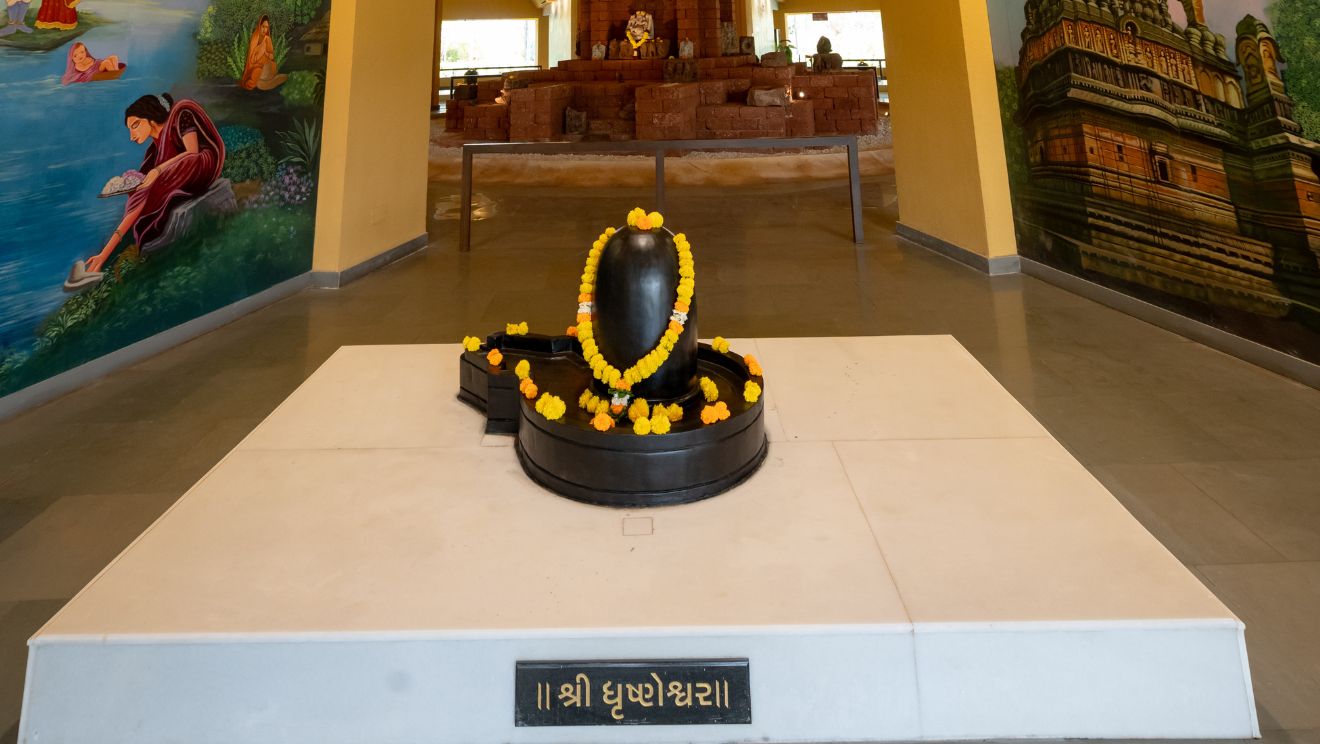
Located near the famed Ellora Caves in Maharashtra, Grishneshwar Temple is the twelfth and final Jyotirlinga in the revered list of Lord Shiva shrines. The temple name comes from “Ghushma,” the unwavering devotee of Shiva, whose story is steeped in love, tragedy, and divine grace.
In ancient times, a noble Brahmana named Sudharma lived with his wife Sudeha at Mount Devagiri. The couple was deeply spiritual but remained childless. In her desperation, Sudeha urged her husband to marry her younger sister Ghushma, who was a devout follower of Parameshwara (Shiva). Through sincere prayers and rituals of creating and immersing clay lingas, Ghushma’s devotion bore fruit—she was blessed with a son.
Jealousy, Tragedy, and Unshakable Devotion
However, Sudeha’s heart turned bitter with jealousy. Consumed by envy over her sister’s joy, she committed an unthinkable act—one night, she murdered Ghushma’s son and threw his body into the pond where Ghushma used to immerse her clay Shivalingas.
The next morning, when the boy’s body surfaced, the household and the village were struck by grief and horror. But Ghushma remained unmoved, not out of ignorance, but out of unwavering faith. She continued her ritual worship of Shiva, chanting his name with devotion that transcended personal loss.
Unfolding the Vision: Installation in Progress

Divine Intervention and the Birth of a Jyotirlinga
Pleased by her unconditional devotion, Lord Shiva appeared before her, ready to punish the wrongdoer. But in a moment that defines true forgiveness and compassion, Ghushma refused to seek revenge, asking only for the revival of her son and the well-being of all.
Touched by her kindness, Lord Shiva brought her son back to life and asked what boon she wished for. Ghushma, ever humble, requested the Lord to reside eternally at that sacred spot. Granting her wish, Shiva manifested as a Jyotirlinga there, and the place came to be known as Grishneshwar—derived from “Ghushma + Ishwar” (the Lord of Ghushma).


Spiritual Significance
Grishneshwar Temple is a profound reminder that pure devotion, forgiveness, and love can move even the divine. Unlike other temples centered on grandeur or divine wrath, this site radiates serenity, kindness, and the power of devotion in its purest form. For pilgrims and seekers, it stands as a sanctuary of grace, endurance, and faith.
